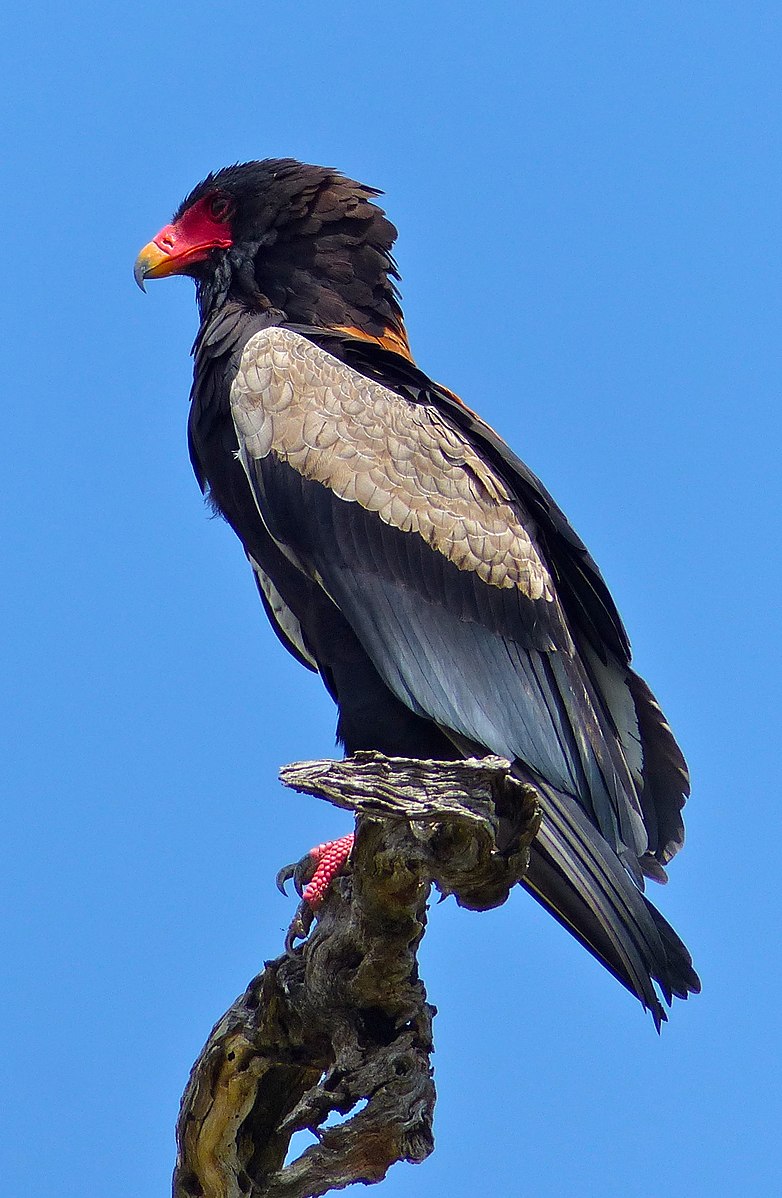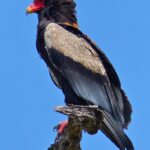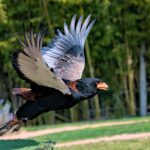The Bateleur eagle (Terathopius ecaudatus) is a medium-sized, colorful eagle native to Africa, with an estimated population of 10,000-100,000 individuals left in the wild. These majestic birds are widely distributed across the continent, excluding the northern deserts, and are found in open woodland, tree savanna, grasslands, and thornbush habitats.
The Bateleur Eagle Population: A Closer Look
According to the International Union for Conservation of Nature (IUCN), the Bateleur eagle population is classified as “Near Threatened.” This means that the species is not yet considered endangered, but its numbers are declining, and it faces significant threats to its survival.
The exact population size of the Bateleur eagle is difficult to determine, as they are widely distributed across Africa and can be challenging to monitor. However, the IUCN estimates that the global population ranges between 10,000 and 100,000 individuals.
To better understand the Bateleur eagle population, let’s take a closer look at the available data:
| Region | Estimated Population |
|---|---|
| Southern Africa | 5,000-20,000 |
| East Africa | 5,000-20,000 |
| West Africa | 1,000-5,000 |
| Central Africa | 1,000-5,000 |
These figures suggest that the Bateleur eagle is most abundant in Southern and East Africa, with smaller populations in West and Central Africa.
Threats to the Bateleur Eagle Population
 Image source: Bateleur Eagle By Bernard DUPONT
Image source: Bateleur Eagle By Bernard DUPONT
The Bateleur eagle faces several threats that contribute to its declining population. The primary threats include:
-
Habitat Loss: The conversion of natural habitats, such as open woodlands and savannas, into agricultural land and human settlements is a significant threat to the Bateleur eagle. This loss of suitable habitat can force the birds to relocate or lead to a decrease in their overall population.
-
Accidental Poisoning: Farmers often use poisoned carcasses to deter predators from their livestock. Bateleur eagles, being scavengers, can accidentally feed on these poisoned carcasses, leading to their death.
-
Trapping for International Trade: Bateleur eagles are sometimes captured and sold in the international pet trade, which can have a detrimental impact on their wild populations.
Conservation Efforts for the Bateleur Eagle
To address the threats facing the Bateleur eagle, various conservation organizations and initiatives are working to protect this species and its habitat. Some of the key efforts include:
-
Habitat Protection: Organizations like the Peregrine Fund are working to protect and restore the natural habitats of the Bateleur eagle, ensuring that they have suitable areas to thrive.
-
Anti-Poisoning Campaigns: Efforts are being made to educate farmers and communities about the dangers of using poisoned carcasses, and to promote alternative methods of predator control that do not harm wildlife.
-
Monitoring and Research: Ongoing monitoring and research are essential for understanding the Bateleur eagle’s population dynamics, behavior, and habitat requirements, which can inform conservation strategies.
-
Community Engagement: Engaging local communities in conservation efforts, such as through ecotourism and environmental education programs, can help raise awareness and foster a sense of stewardship for the Bateleur eagle and its habitat.
Conclusion
The Bateleur eagle is a unique and fascinating bird, with a wide distribution across Africa and a distinctive appearance. However, its population is facing significant threats, including habitat loss, accidental poisoning, and trapping for international trade. Conservation efforts are underway to protect this species, but more needs to be done to ensure its long-term survival in the wild.
By understanding the current population status and the threats facing the Bateleur eagle, we can work together to implement effective conservation strategies and ensure that these majestic birds continue to soar across the African skies for generations to come.


